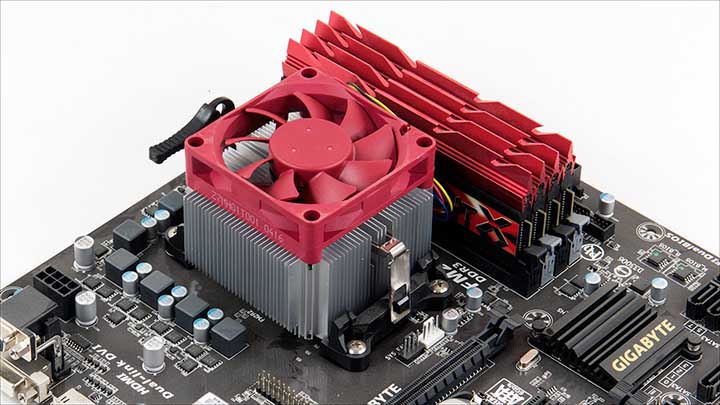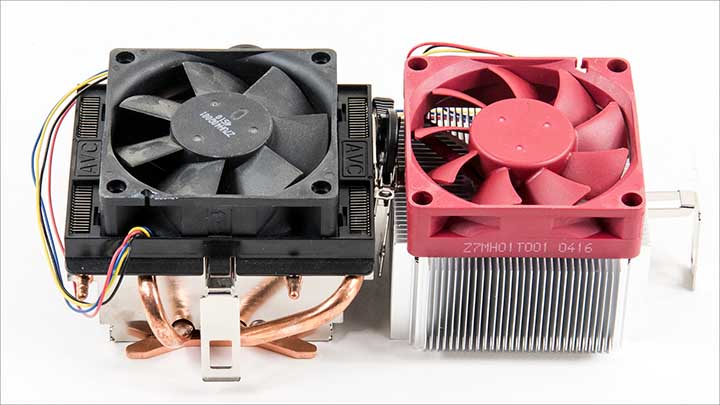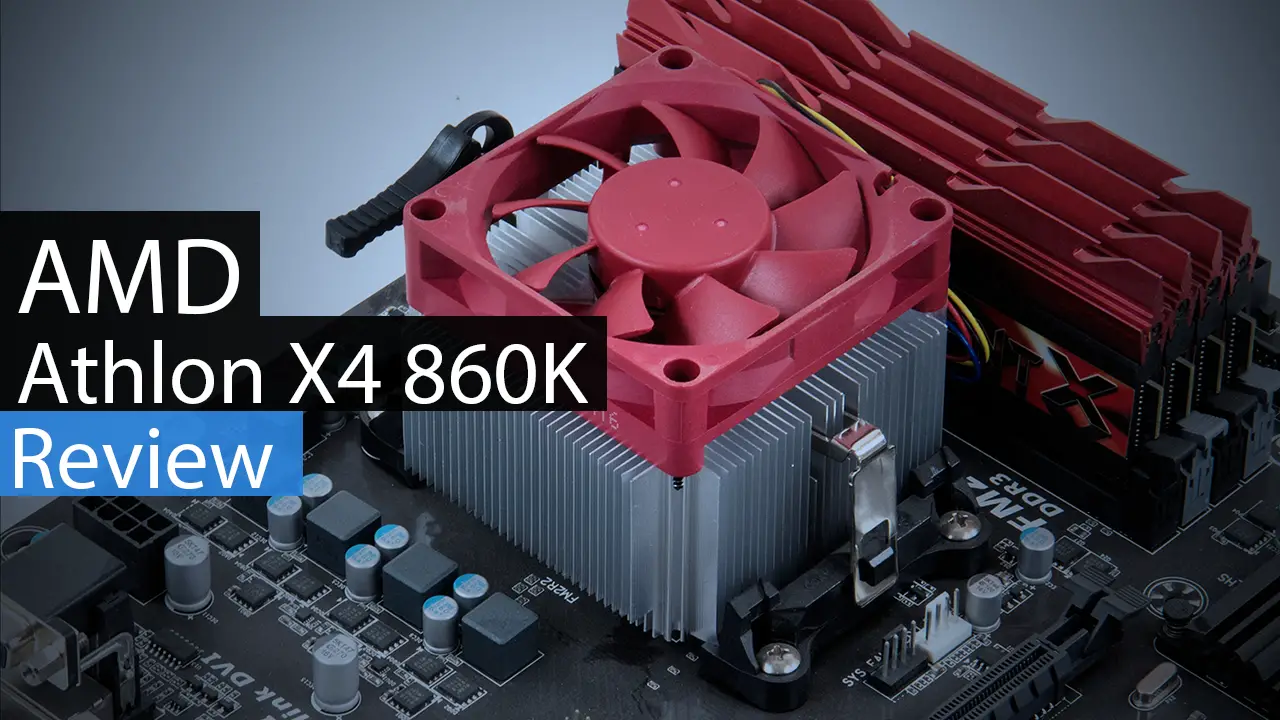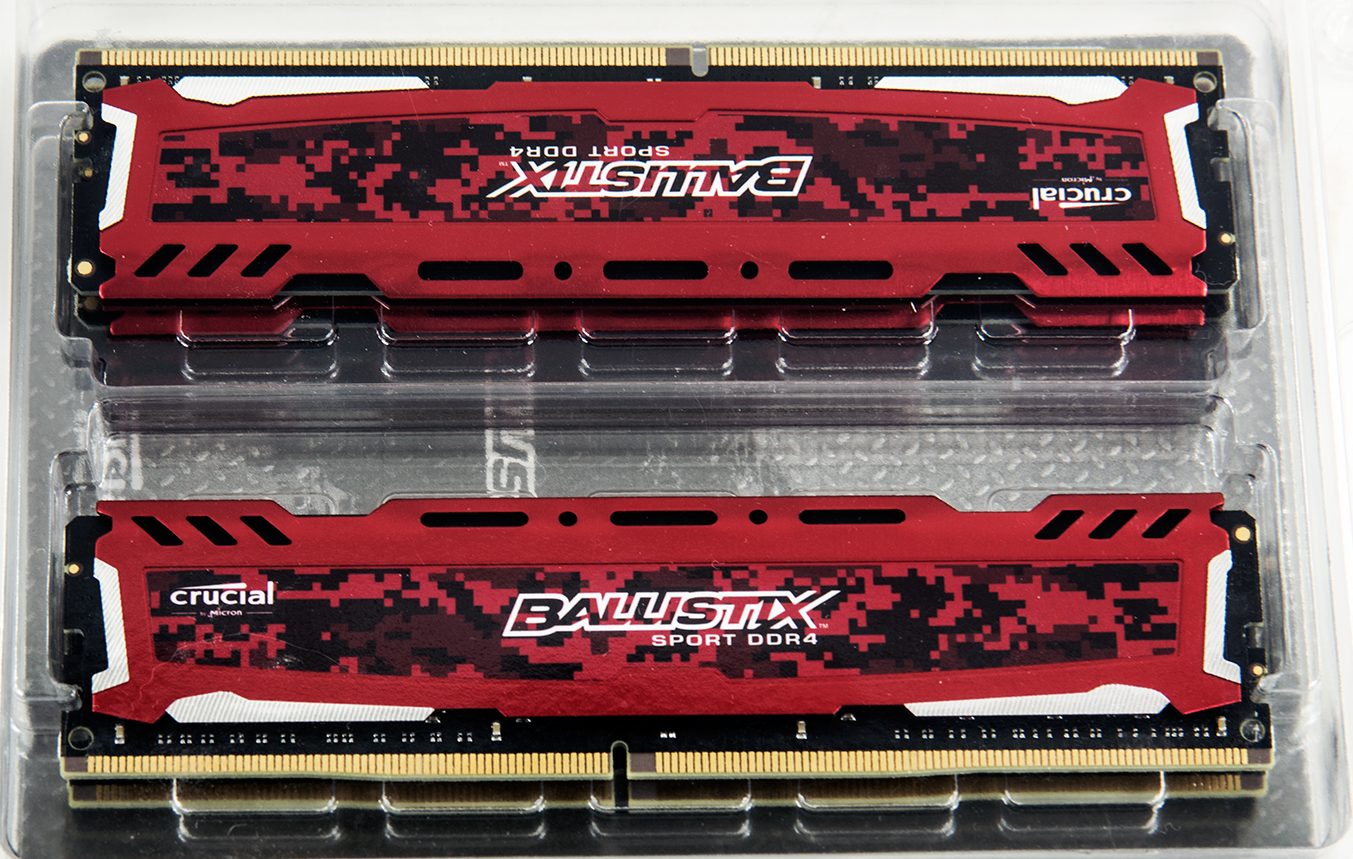For all intents and purposes the Athlon X4 860K is a A10-8750K APU that failed to pass all the factory testing in regards to its integrated 8 video processing units. However, while this may sound like a bad thing it’s not really. Basically in order to become an 860K the four CPU cores had to pass with flying colors their factory testing so they are in no shape nor form ‘rejects’. Those 8 video cores are deactivated and just take up space. That is all. Put another way the 860K and 8750K offer the same ‘CPU’ performance and just the 860K is missing the ‘GPU’ abilities. More to the point since not everyone is interested in upgrading their APU to another APU. Many people with older FM2+ motherboards may want to go to a discrete video processing solution (eg an AMD Radeon 480) so while they don’t want to switch out the motherboard the ‘GPU’ portion of the APU will sit idle. Also as this is a Black or ‘K’ edition processor consumers can easily boost the frequency above stock settings further increasing the overall value of this ‘Athlon’ processor.
More to the point since not everyone is interested in upgrading their APU to another APU. Many people with older FM2+ motherboards may want to go to a discrete video processing solution (eg an AMD Radeon 480) so while they don’t want to switch out the motherboard the ‘GPU’ portion of the APU will sit idle. Also as this is a Black or ‘K’ edition processor consumers can easily boost the frequency above stock settings further increasing the overall value of this ‘Athlon’ processor.
Basically in return for not being able to use the 8 deactivated cores people can get a great deal on a 4 core CPU…. Just one that uses a different form-factor. Equally important is those not interested in AMD’s latest ‘core that is not really a core’ nomenclature these four Bulldozer cores are in fact four real cores with integrated floating point and all the rest of the goodness that has been separated out on some of AMD’s ‘CPU’ lineup. As such for seventy dollars the Athlon X4 860K does represent one heck of a value. Now as this is a more entry level processor it should come as no surprise that AMD did not include their high end Wraith or even Wraith lite…. Err 125watt Near Silent CPU cooling solution. Instead they include a 95-watt capable cooling solution that strongly reminds us of a high end Intel stock cooling solution in that the center of the cooler is a solid chunk of copper and the cooling fins radiate out from this central point. The easiest way to think about this is the fan sits on top and pushes air down through very long, very thick aluminum cooling fins which in turn keep the central ‘column’ of copper cool… which is in direct contact with the IHS of the 860K.
Now as this is a more entry level processor it should come as no surprise that AMD did not include their high end Wraith or even Wraith lite…. Err 125watt Near Silent CPU cooling solution. Instead they include a 95-watt capable cooling solution that strongly reminds us of a high end Intel stock cooling solution in that the center of the cooler is a solid chunk of copper and the cooling fins radiate out from this central point. The easiest way to think about this is the fan sits on top and pushes air down through very long, very thick aluminum cooling fins which in turn keep the central ‘column’ of copper cool… which is in direct contact with the IHS of the 860K. The only issue with this stock cooler is that it is not nearly as capable as the other two AMD stock cooling solutions. This did limit our overclocking to about 4.3GHz; however, by using an old AMD stock cooler we easily hit 4.5Ghz and probably could have gone even higher.
The only issue with this stock cooler is that it is not nearly as capable as the other two AMD stock cooling solutions. This did limit our overclocking to about 4.3GHz; however, by using an old AMD stock cooler we easily hit 4.5Ghz and probably could have gone even higher. Since most consumers interested in these APUs will be overclocking but also already own a AMD (heat-pipe based) cooling solution this issue is not that big a deal – simply reuse the existing cooler and leave this one in the box. More to the point for those who do not own a more optimal cooling solution the ultra-low asking price makes finding room in a budget for said after-market cooler a breeze. Overall, at this price point we doubt anyone can complain too much about the still outstanding value!
Since most consumers interested in these APUs will be overclocking but also already own a AMD (heat-pipe based) cooling solution this issue is not that big a deal – simply reuse the existing cooler and leave this one in the box. More to the point for those who do not own a more optimal cooling solution the ultra-low asking price makes finding room in a budget for said after-market cooler a breeze. Overall, at this price point we doubt anyone can complain too much about the still outstanding value!
AMD Athlon X4 860K – Testing Methodology
For this review all CPUs were tested at stock ‘factory’ settings with no overclocking, boosting, or tweaking done to their profile.
To ensure consistent results, a fresh installation of Windows 8.1 was installed with latest chipset drivers and accessory hardware drivers (audio, network, GPU) from the manufactures website.
The full list of the applications that we utilized in our benchmarking suite:
Cinebench R15
3DMark 8
WinRAR
x264 HD Benchmark
AIDA64
PCMark 8
Sleeping Dogs
BioShock Infinite
Battliefield 4
Assassins Creed: Black Flag
Call of Duty: Ghosts
System Components Used:
Processors: A10-7800, Intel i3-6100, A10-7890K, Intel i5-6400
CPU Cooler: AMD Wrath CPU cooler, stock Intel cooler, stock AMD cooler
Memory: 32GB GSkill TridentX DDR3-2400, 32GB Crucial Ballistix Sport DDR4-2400
Motherboard: Gigabyte GA-F2A88XM-D3H, ASUS Z170-A
Power Supply: EVGA
Storage: Crucial MX300 750GB L.E.
AMD Athlon X4 860K – Benchmarks
CINEBENCH R15
CINEBENCH is a real-world cross platform test suite that evaluates your computer’s performance capabilities. CINEBENCH is based on MAXON’s award-winning animation software CINEMA 4D, which is used extensively by studios and production houses worldwide for 3D content creation.
winRAR Benchmark
WinRAR is a popular file compression and decompression tool that also happens to be multi-threaded application. While it does have a built in benchmark we have opted to use a custom 3GB test consisting of small, medium, and moderately large files. We then time how long it takes to compress the files into one .rar file with all WinRAR settings left at their defaults.
x264 HD Benchmark
x264 HD Benchmark is a benchmark that allows you to measure how fast your PC can encode a 1080p video clip into a high quality x264 video file. It allows for an easy comparison because everyone running it will use the same video clip and software. The x264 video encoder has a fairly accurate internal benchmark (in frames per second) for each pass of the video encode and it also uses multi-core processors very efficiently. All these factors make the x264 HD Benchmark an ideal tool in comparing the video encoding performance of different processors and systems.
Adobe
Photoshop is a notoriously slow loading program under the best of circumstances, and while the latest version is actually pretty decent, when you add in a bunch of extra brushes and the such you get a really great torture test which can bring even the best of the best to their knees. Let’s see how our review unit faired in the Adobe crucible! 
PCMark 8
PCMark 8 is the latest iteration of Futuremark’s system benchmark franchise. It generates an overall score based upon system performance with all components being stressed in one way or another. The result is posted as a generalized score.
These results just highlight exactly how much performance wise consumers can get if they are simply willing to think outside the box and look long and hard at ‘APU’ options and not just the classical ‘CPU’ options!
AMD Athlon X4 860K – Power, Temp & Sound
System Power Consumption
To obtain accurate results we have connected the system to a Power Angle power meter that has in turn been attached to a 1500watt UPS. This ensures only 120volt power is supplied to the PSU and removes an variances that could potential crop up because of brownouts and power spikes.
In order to stress the video card we have once again used Unigine’s Valley benchmark and ran it for 20 minutes to determine peak system power consumption. For idle results we have let the system idle at the Windows 8.1 desktop for 25 minutes and recorded the peak idle power consumption. This is one area that Intel is clearly ahead of AMD in; however, given how little this processor costs a few cents a month extra in electricity is more than worth it.
This is one area that Intel is clearly ahead of AMD in; however, given how little this processor costs a few cents a month extra in electricity is more than worth it.
Temperature Results
For all temperature testing the cards were used in an open test bed environment. Ambient temperature was kept at a constant 20°C (+/- 0.5°C) and if the ambient room temperatures rose above 21°C or dropped below 19°C at any time, all benchmarking was stopped until proper temperatures could normalized.
For Idle tests, we let the system idle at the Windows 8.1 desktop for 25 minutes and recorded the peak temperature. For Load tests we ran AIDA64 for 20 minutes. This stock cooler really is only meant for stock settings and if you do decide to overclock we do recommend either holding on to your existing AMD cooler or purchasing an after-market one. Considering how inexpensive this APU is, that really is not that big a deal as far as we are concerned.
This stock cooler really is only meant for stock settings and if you do decide to overclock we do recommend either holding on to your existing AMD cooler or purchasing an after-market one. Considering how inexpensive this APU is, that really is not that big a deal as far as we are concerned.
Sound Level Test Results
While everyone “hears” noise differently there is one easy way to remove all subjectivness and easily compare different fans: use a sound level meter. This way you can easily compare the various fans noise envelopes without us coloring the results and see what fans fit within your personal comfort level. Of course, we will endeavor to try and explain the various results – which are taken at a 15 inch distance from the GPU’s fan(s) – to help you gain an even better understanding of how loud a cooler’s stock fan is, but even if you discount our personal opinions, the fact remains numbers don’t lie.
For Idle tests, we let the system idle at the Windows 8.1 desktop for 25 minutes and recorded the peak temperature. For Load tests we ran AIDA64 for 20 minutes.
 We must admit that these results are pretty darn decent and for people who plan to never overclock their system the included stock cooler will be more than enough!
We must admit that these results are pretty darn decent and for people who plan to never overclock their system the included stock cooler will be more than enough!
AMD Athlon X4 860K – Summary and Closing Statement
Summary

Even with the less than optimal cooler taken into account this processor is easily the best value AMD processor we have reviewed to date. What an incredible value!
Closing Statement
For budget constrained consumers who are not interested in APU / integrated video card and rather plan on using a discrete GPU the AMD Athlon X4 860K represents one hell of a bargain. Not only does it come with a darn near silent cooling solution that is more than up to the task of stock cooling, the underlying four cores are precisely the same as the A10-7870K – a processor that costs well over twice as much. Quite literally all AMD has done is cut the integrated video processing units and cut the price. This means the exact same overclocking headroom, the exact same real world performance, and the same range of abilities. Put another way if you don’t care about integrated video performance the X4 860K is an insanely good value.
Better still is when one turns their attention outwards and considers Intel’s offerings the AMD Athlon X4 860K can still more than hold its own. Of course this not because it can offer comparable levels of processing performance on a core by core basis – as the underlying core technology is getting a touch long in the tooth – rather it is because this CPU costs nearly 72 percent less yet offers four cores and not two like the i3-6100! In other words, this CPU may indeed lag behind in core vs core comparisons but with two extra cores it does come darn close. Thus the value it offers is rather insane.
If all that was not enough consumers thinking about the Intel i5 competition will once again have to think long and hard if the 257 percent increase is actually worth it. As we saw throughout testing the X4 860K can easily be overclocked (the Intel cannot unless you opt for the even more expensive K options) to make the performance differences even smaller. Though to be honest for the average consumer interested in a budget system either 860K or i5-6400 will offer more than enough performance at stock. Put another way consumers will have to think long and hard if they will even notice any differences in the real world and if this difference justifies spending so much more. After all that amount can be a rather significant portion of a budget and it can be spent on – for instance – more RAM, a better cooling solution, or maybe even a Solid State Drive instead of a SSHD or HDD.
In the end the AMD Athlon X4 860K is one incredible value that a lot of budget constrained consumers should be taking a long hard look at.












